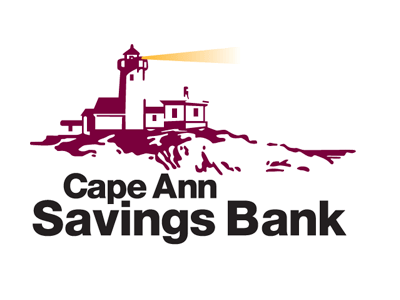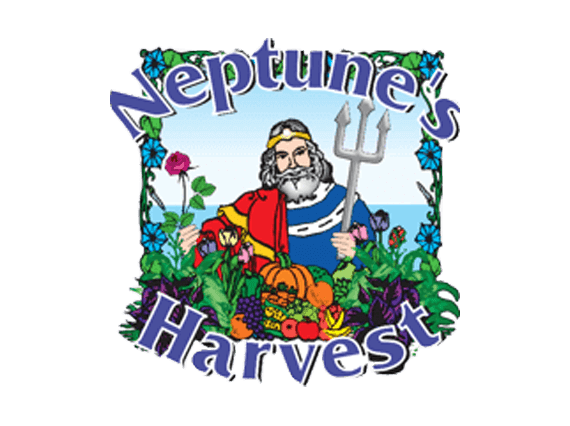The Great Storm of 2038 Scenario Shows Significant Damage to the Essex Causeway
The TownGreen-sponsored Harvard Graduate School of Design (HGSD) Typologies of Vulnerability climate study researchers have completed their visualizations of the impacts of a Category 3 Hurricane and continue to explore coastal communities adaptation measures from around the world. This month, TownGreen is releasing images from the HGSD climate study highlighting damage to the Essex Causeway. The three images shown below (before, during, and after the storm) depict flooding damage to buildings, roads, and infrastructure. The images are accompanied by a narrative developed by HGSD researchers.
HGSD researchers’ narrative
The Essex Causeway floods early in the morning. This cuts off Route 133, a critical evacuation route. The Essex Board of Selectmen urge business owners along the Causeway to board up their windows and get out.
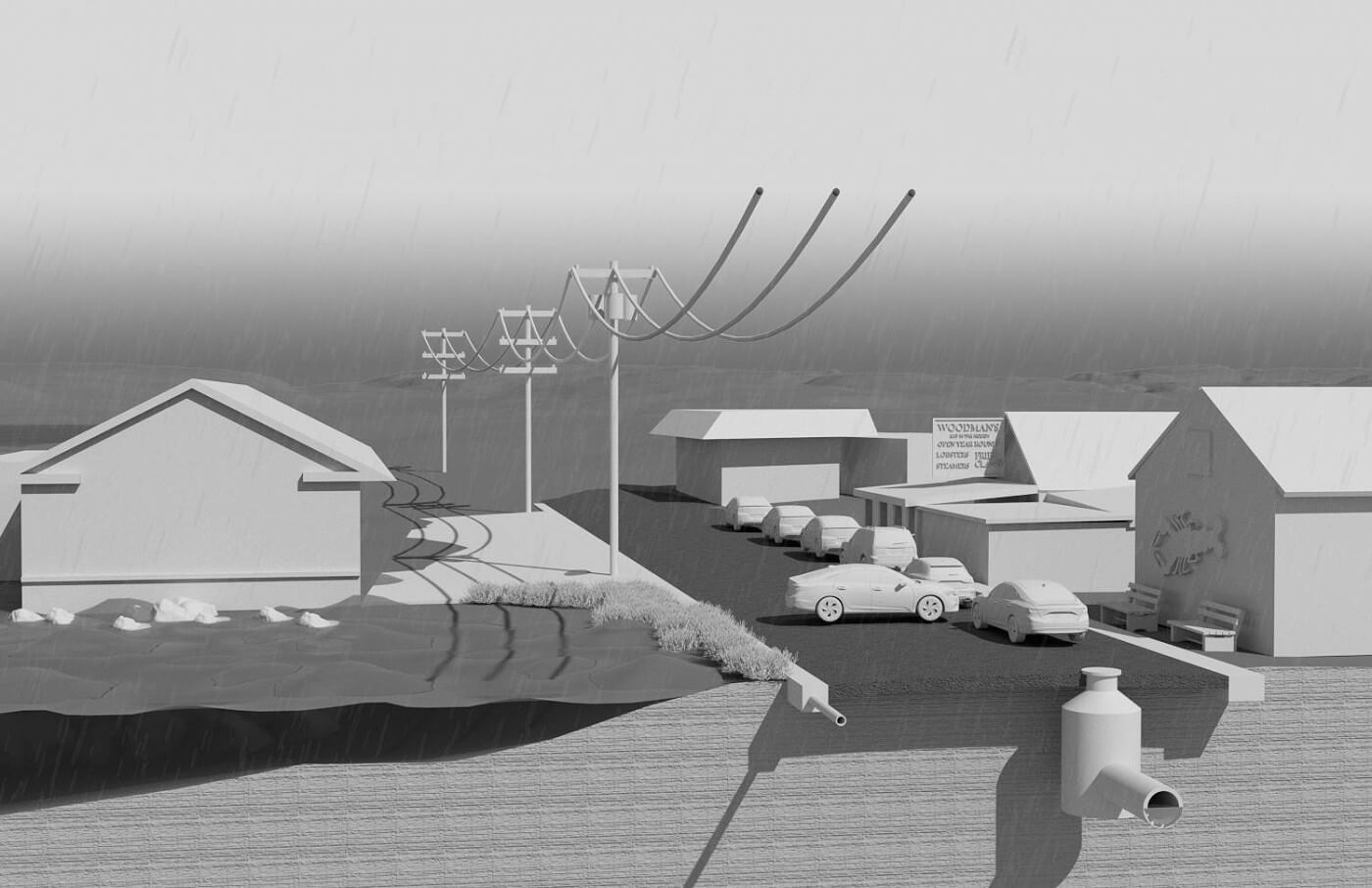
“The Essex Causeway before the Great Storm of 2038,” Typologies of Vulnerability: The Case of Cape Ann; Harvard GSD Office for Urbanization, 2022.

“The Essex Causeway during the Great Storm of 2038,” Typologies of Vulnerability: The Case of Cape Ann; Harvard GSD Office for Urbanization, 2022.
HGSD researchers’ narrative:
The Causeway remains impassable. The bridge is washed out and the stormwater system under the road leaks waste. Residents seeking emergency medical attention turn around and look for alternate routes to Beverly Hospital or Addison Gilbert Hospital.
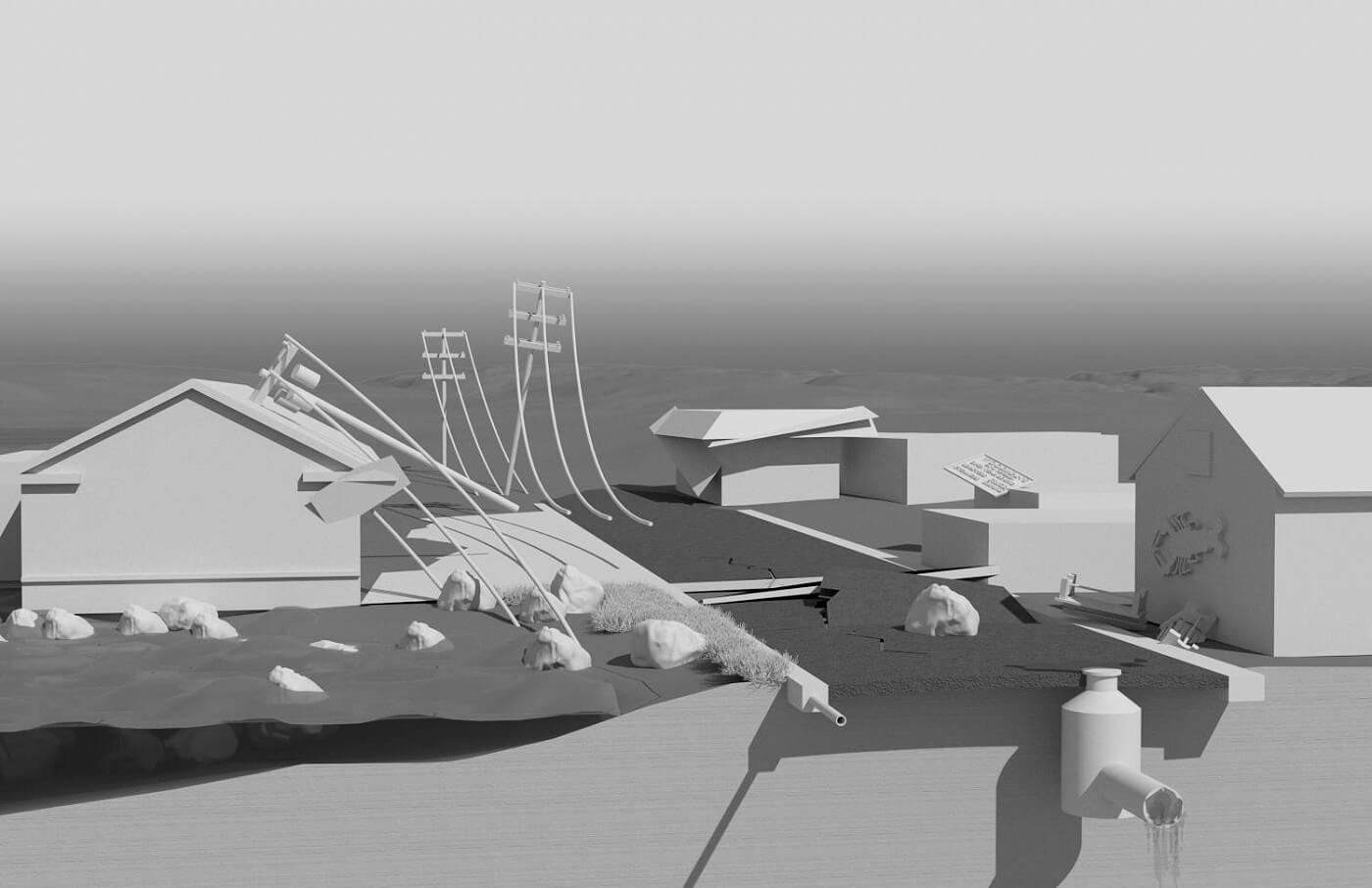
“The Essex Causeway after the Great Storm of 2038,” Typologies of Vulnerability: The Case of Cape Ann; Harvard GSD Office for Urbanization, 2022.
Looking at Solutions from Around the Globe
TownGreen’s next HGSD scenario, Adaptation: Armoring Infrastructure and Relocation, envisions the effects of armoring Cape Ann’s coast by protecting infrastructure threatened by sea level rise and inundation with hard infrastructure and living shorelines and other natural system protections. Other options are through accommodating or avoiding storm damage. Upcoming scenarios will imagine relocation for the most vulnerable flood and storm surge zones.
This month’s look at solutions are a golf course in Tucson, Arizona configured to respond to flooding with a remain in place approach that allows flooding and a concept called SALT that involves avoidance or moving out of the way. Both solutions could be adapted for Cape Ann.
Accommodation: Remain in place and allow flooding
The Dell Ulrich Golf Course in Tuscon, AZ was redesigned in the mid-1990s with deeper depressions along the fairway to store rainwater in the event of flooding. The course intercepts flow from three square miles with the runoff ultimately draining through a large culvert into a nearby waterway. The redesign of the course mitigates flooding for 600 residential homes that are part of a FEMA designated flood zone nearby.

Mike Bailey, “Dell Ulrich Golf Course,” Golf Pass, 2014.
Avoidance: Move Out of the Way
John Englander proposed the adoption of Shoreline Adaptation Land Trusts (SALTs) in 2015. SALTs are nonprofit public land trusts established pro bono for any defined area to get property into the public sector in anticipation of submergence. Private and commercial property owners donate coastal real estate that is vulnerable to erosion and sea level rise, and the owner is allowed to continue full use for his or her lifetime, subject only to sea level rise and intermittent flooding. The immediate benefit to the donor would be to terminate property taxes. A second benefit is a tax-deductible gift donation for the value of the property, including the land, buildings, and infrastructure. The percentage of deductibility would decline 2% every year from the inception of the SALT.
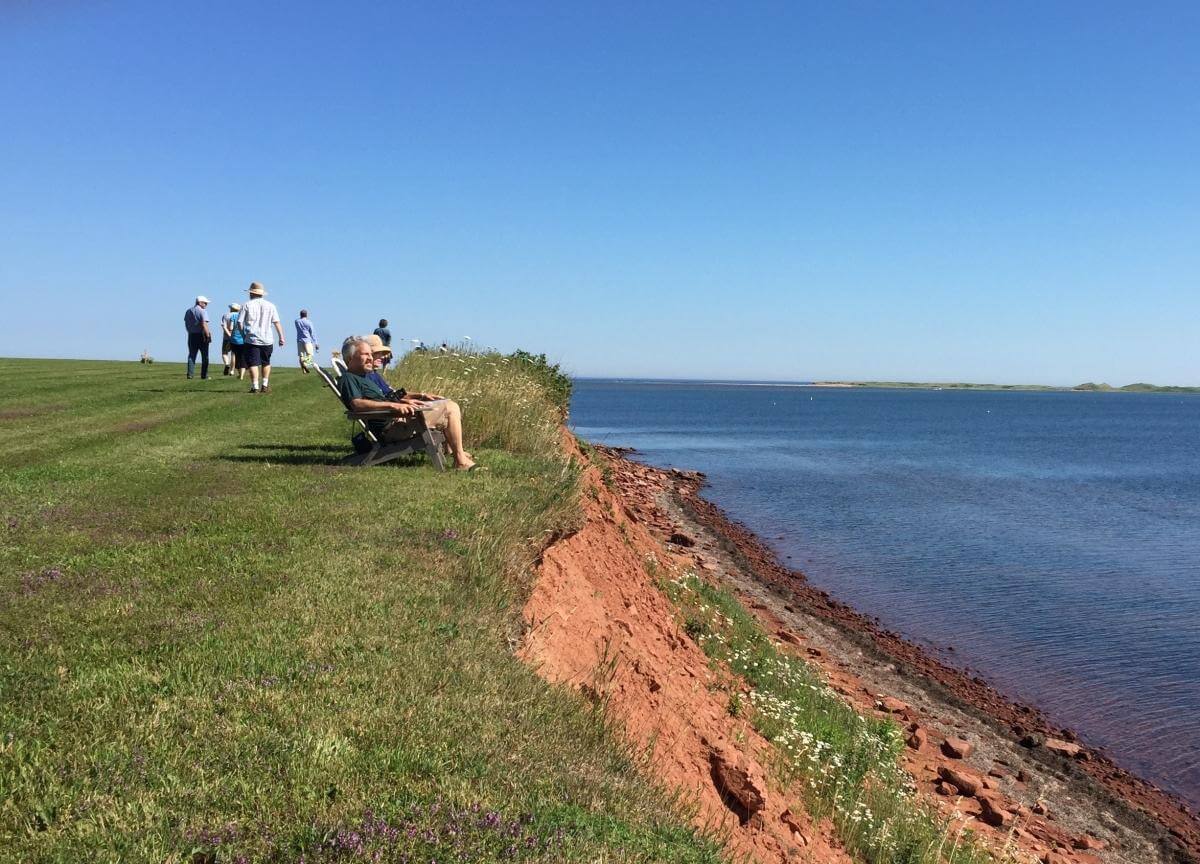
John Englander, “SALTs,” John’s Blog/Newsletter: SEA LEVEL RISE NOW, 2015.
The Voices of Cape Ann Project Update
The Voices of Cape Ann Project is underway with the first round of interviews happening through the end of March. All interviewers are making great progress across all four communities. Residents are being asked about why they live in a community, what they love about the community, and what their hopes and concerns are for their community. Teams are reaching into the Brazilian community, speaking to business owners, working with students to conduct interviews, and speaking with members of the faith-based and fishing communities. We are hoping to speak to over a 100 people. Data from the two interviews will be compiled into a report that TownGreen will use as part of the HGSD ethnographic study and to inform the EPA Workshops in late April and May. We hope to share this information with all of you in the May newsletter.
Essex Selectman Peter Phippen is Interviewed About The Great Marsh
Essex Selectman Peter Phippen recently spoke with Heather Atwood on Cape Ann Today to discuss the threats to the Great Marsh from sea level rise. Listen to his interview here.
Peter Phippen's new "The Great Marsh" Column in the CricketEssex Selectmen Peter Phippen has started a column in The Cricket about the Great Marsh. The Great Marsh plays a crucial role in protecting Essex, Massachusetts from storm surges and it is a complex ecosystem. Read Peter Phippen's Column: https://bit.ly/3i6RVYZ Sponsored by Building Center Stores - https://www.bcgloucester.com Sponsored by Action Inc. - https://actioninc.org
Posted by 1623 Studios on Tuesday, March 15, 2022
Coming This Spring
Later this spring, TownGreen will host webinars with Professor Charles Waldheim and the HGSD team for a presentation of “The Great Storm of 2038” scenario. Details will be available soon.
Support TownGreen’s Research on Cape Ann
If you would like to support TownGreen's efforts to fight climage change on Cape Ann, please make a donation by using the links below. Thank you!




